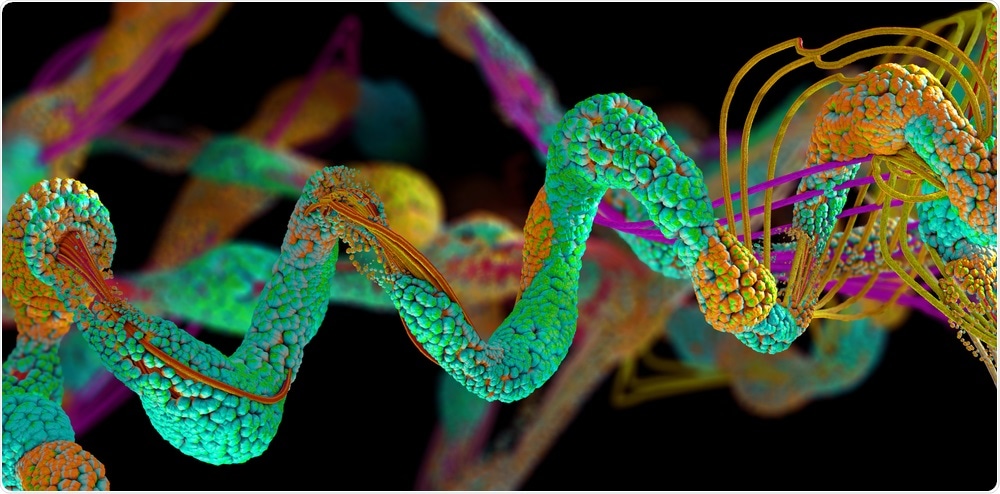Please could you introduce yourself, tell us about your background within proteins, and why you decided to carry out your latest research into music and proteins?
I am a Professor at the Department of Pharmacy of the National University of Singapore. Since 2002, I have led my research group working on the bioinformatics of proteins and AI prediction of protein functions.
In 2006 I led a student to develop a prototype protein-to-music mapping algorithm. In recent years, I led a team of Ph.D. students (Dr. Peng Zhang) and high school students (Nicole and Fanxi), and a few other scholars to develop a new protein-to-music mapping algorithm of enhanced musicality.
Scientists began creating music based on the structure of proteins to help popularize science to the general public. What is the importance of popularizing science?
Our life and society have benefited greatly from the advancement of science. But science is typically perceived as something hard to understand by the general public.
Through the music of science, protein music, in particular, the public can hear the sound of a scientific subject (the sound of proteins as the workhorses of life). This way, science can be more easily connected to the general public.

Image Credit: Christoph Burgstedt/Shutterstock.com
How are songs created from the structure of proteins? What is the algorithm behind this?
Protein structure is like a folded chain. This chain is composed of small units called amino acids. There are 20 amino acids, each is labeled by an alphabetic letter. A protein chain can be denoted as a string of these alphabetic letters, very much like a string of music notes in alphabetical notation.
Protein chain folds into waved and curved patterns with ups, downs, turns, and loops. Music string is with sound waves of higher and lower pitches, tempos, and repeats. Protein-to-music algorithms map the string of amino acid structural and chemical features into the string of musical features.
Often the music produced by proteins is not pleasant. Why is this?
Different proteins are usually composed of vastly different series of alphabetic letters, which look closer to a randomly arranged string of letters than to an ordered string of letters. On the other hand, music string is highly ordered with apparent repeating patterns or up-and-down patterns.
The protein-to-music composition algorithm typically maps amnio acids to fundamental music features. Under such mapping strategy, it is hard to map the random-like string of letters into a highly ordered string of letters. The more deviation from highly-ordered music string, the less pleasant the protein music.
Can you describe how you carried out your latest research into proteins and how you utilized classical music to convert proteins into songs with greater musicality?
In the development of protein function prediction AI models, we explored the structural and chemical properties of the amino acids as protein amino acid features for AI recognition of protein functions. These amino acid features were used as the basic elements for protein-to-music mapping.
The existing protein-to-music mapping algorithms provide a simple mapping of strings of amino acid features into the fundamental musical features such as pitches and note lengths. These simple algorithms do not map well with more complex musical features such as rhythm and harmony.
By focusing on a music style such as classical music, we can use the strong characteristics of the music style to guide more complex mappings of combinations of amino acid features with various musical features.
Were there any proteins that improved more in their musicality compared to others?
Yes. The music of different proteins is with notable variations in pitch, loudness, and rhythm. As the music generated is based wholly on the amino acid sequence, no two pieces are alike and each protein will produce a distinct music piece. This also means that there are variations in musicality across the different pieces, and interesting patterns can emerge.
For example, the music generated from the oxytocin receptor has some recurring motifs due to the repetition of certain smaller sequences of amino acids within the protein sequence. Some music also sounds more chromatic than others; the music generated from the cellular tumor antigen p53 is highly chromatic, and there are particularly fascinating phrases where the music sounds almost toccata-like, repeating and ‘developing’ a motif.

Image Credit: Wongsiri Subhayon/Shutterstock.com
You specifically chose four pieces of classical music from the mid-1800s Romantic era. Why was this?
Four pieces of music allowed us to draw a sufficient number of characteristic features of the specific music style for guiding the development of protein-to-music mapping algorithms.
What further research needs to be carried out before the songs resemble human music?
There is a need for the exploration of more variety of music styles, not only for creating more pleasant protein music but also for more robust protein-to-music algorithm development procedures.
Secondly, there is a need for using more pieces of music of each music style for guiding the refinement of protein-to-music mapping algorithms.
What are some of the next steps for you and your research? How will artificial intelligence (AI) play a part in this?
We will explore more music styles, and employ state-of-the-art music composition AI technology.
Regarding AI, we have recently developed a new AI for pharmaceutical applications by changing the way AI reads molecular properties (https://www.sciencetimes.com/articles/30403/20210331/molmapnet-new-ai-tool-uses-deep-learning-predict-pharmaceutical-properties.htm ). We intend to further develop this AI for more advanced protein-to-music mapping.
Where can readers find more information?
Our protein music MIDI files and codes can be found in http://www.bidd.group/protmusic/.
About Dr. Peng Zhang
Dr. Peng Zhang was a former Ph.D. student at the National University of Singapore, and now is a postdoc at Rockefeller University. Dr. Zhang was involved in the development of computer algorithms for protein-to-music mapping.
About Professor Yu Zong Chen
A Professor at the Department of Pharmacy of the National University of Singapore. Previously an Associate Professor and Head of the Department of Computational Science of the National University of Singapore. His research is in bioinformatics and the application of AI in biomedicine.
He led the team of one Ph.D. student (Peng Zhang) and two high school students (Nicole and Fanxi) and some other scholars for the development of protein-to-music mapping algorithms.